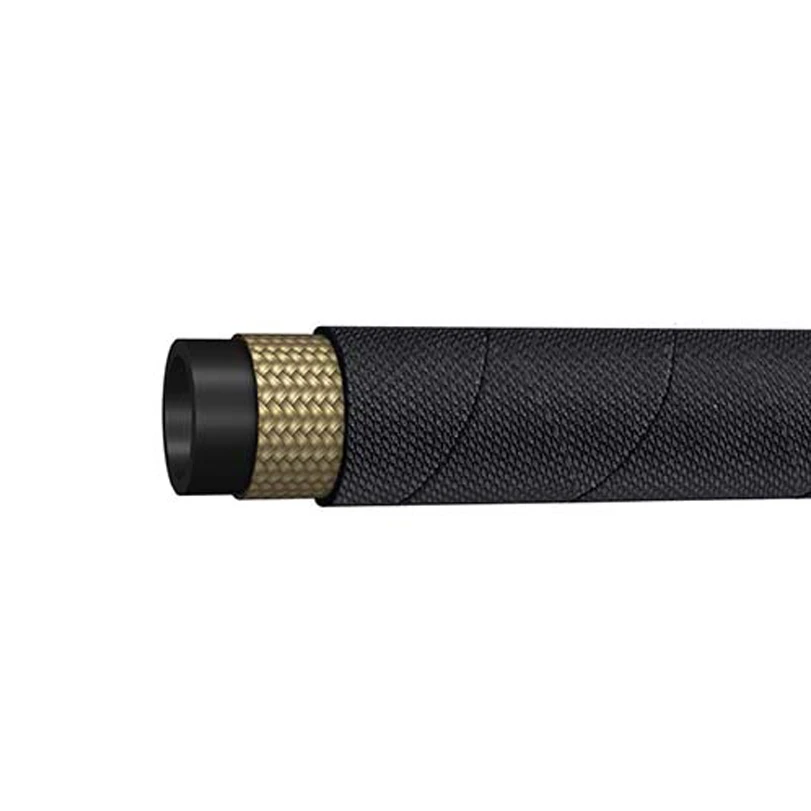335345435
Dec . 04, 2024 19:36 Back to list
hydraulic brake hose
Understanding Hydraulic Brake Hoses Essential Components for Vehicle Safety
Hydraulic brake hoses play a crucial role in modern vehicle braking systems. These hoses are essential for transferring brake fluid from the master cylinder to the brake calipers or wheel cylinders, enabling the brakes to function effectively. With advancements in automotive technology and a growing emphasis on safety, understanding the importance of hydraulic brake hoses is critical for both manufacturers and vehicle owners.
The Function of Hydraulic Brake Hoses
At the core of a hydraulic braking system is the principle that liquids are incompressible. When a driver presses the brake pedal, the master cylinder generates hydraulic pressure by pushing brake fluid through the system. This pressure travels through the hydraulic brake hoses to the calipers or wheel cylinders, which then apply force to the brake pads or shoes. Without reliable hydraulic brake hoses, this transfer of pressure would be compromised, resulting in diminished braking capacity and potential safety hazards.
Hydraulic brake hoses are designed to withstand high pressure, withstanding forces that can exceed 2,000 psi during operation. They ensure that the brake fluid remains contained while allowing for the necessary movement of suspension components and steering. The flexibility of these hoses accommodates the dynamics of vehicle movement, which is paramount for maintaining consistent braking performance.
Composition and Construction
Most hydraulic brake hoses are constructed from multiple layers of materials
. The inner layer is typically made of synthetic rubber or thermoplastic elastomer, which is resistant to the corrosive effects of brake fluid. This inner lining is critical because brake fluid can break down certain materials over time, leading to leaks and brake failure.hydraulic brake hose

Surrounding the inner layer is a reinforcing layer usually made of braided steel or synthetic fibers. This reinforcement provides the hose with the strength and durability needed to handle high pressure and temperature fluctuations. The outer layer is a protective cover that guards against abrasion, oil, and environmental factors, extending the hose's lifespan.
Maintenance and Replacement
Regular maintenance of hydraulic brake hoses is vital for vehicle safety. Over time, hoses can deteriorate due to age, heat, exposure to chemicals, or physical damage. Weak spots or cracks can develop, leading to leaks that may result in a complete loss of braking efficiency. Vehicle owners should inspect their brake hoses for signs of wear and tear, such as bulges, cracks, or leaks, especially during routine service checks.
Replacing hydraulic brake hoses is a critical task that should be performed by qualified technicians. It is essential to use high-quality replacement hoses that meet or exceed the manufacturer's specifications. Failure to replace worn or damaged hoses can lead to dangerous situations on the road, making timely intervention essential.
Conclusion
Hydraulic brake hoses are integral components of a vehicle's braking system, contributing significantly to safety and performance. Understanding their function, construction, and maintenance is crucial for vehicle owners and manufacturers alike. As technology continues to evolve, so too will the materials and designs used in hydraulic brake hoses, potentially enhancing their durability and performance.
For vehicle owners, recognizing the importance of these hoses and committing to regular inspections can help ensure a safe driving experience. Ultimately, well-maintained hydraulic brake hoses not only protect the vehicle's braking system but also safeguard the lives of those on the road. Whether you are driving through city streets or on the open highway, reliable braking performance hinges on the health of your hydraulic brake hoses. Always prioritize safety and stay informed about your vehicle's needs.
-
SAE 100 R17 Black Smooth Cover Hydraulic Hose
NewsMar.07,2025
-
SAE 100 R17 Black Smooth Cover Hydraulic Hose
NewsMar.07,2025
-
SAE 100 R17 Black Smooth Cover Hydraulic Hose
NewsMar.07,2025
-
SAE 100 R17 Black Smooth Cover Hydraulic Hose
NewsMar.07,2025
-
SAE 100 R17 Black Smooth Cover Hydraulic Hose
NewsMar.07,2025
-
steel wire braided hydraulic hose
NewsMar.07,2025



